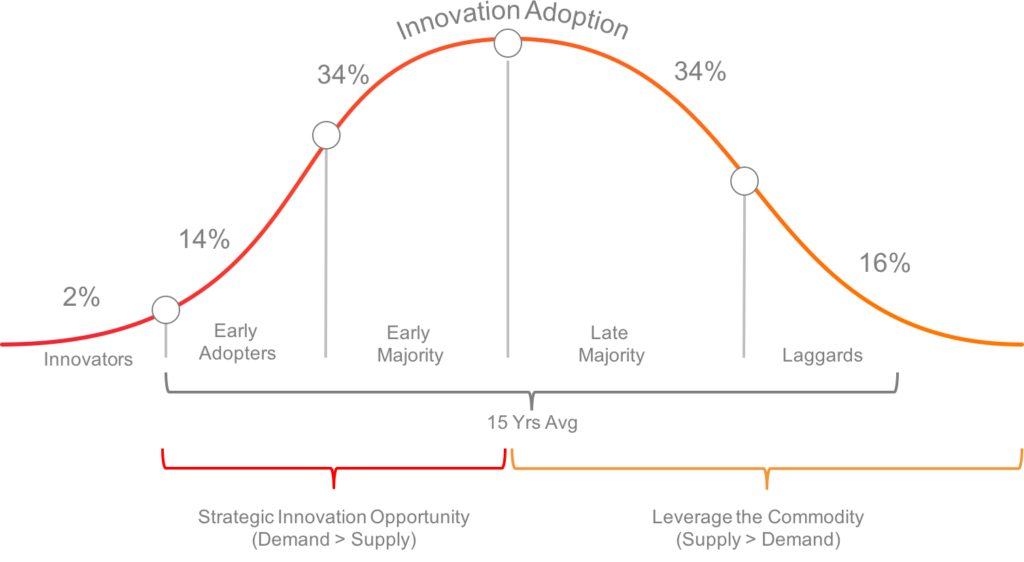Timing is Everything
Timing is everything. You’ve likely heard this said many times before, but a clear explanation of why is rarely forthcoming. And, since timing is so important, how can you identify and take advantage of good timing?
New opportunities typically arise because of new innovation that either inspires or enables others to enter a market. With the web, in particular, the enabler is typically a new platform that brings people together and makes it possible for entrepreneurs to monetize those crowds. For example, Goto.com introduced Pay Per Click (PPC) advertising in 1998, which led to an explosion of e-commerce activity. In 2003 Google AdSense brought about an explosion of ad-driven content websites and blogs. In 2007, Facebook created a platform for social apps and companies like Xynga were born. And in 2008, Apple introduced the app store for the iPhone, and Google followed shortly after with the Android store.
If you are an online entrepreneur, this gives you some idea of where to look, but the opportunities do not last forever. Shortly after Overture launched its paid search platform, Google launched AdWords and brought paid search to the mainstream, and the demand for this service grew quickly. Those who arrived early were able to buy traffic for pennies on the proverbial dollar and had a significant opportunity to build a new business. Competition in the AdWords auctions rose quickly, however, and it wasn’t long before the costs of traffic exceeded the profit margins for many small businesses.
As for Apple’s app store, there was a clear opportunity for those who were early to provide the interactive content the market was demanding, but within only a couple years the app store had already become congested with excess content and discovery of new apps quickly became a problem for those who were not already established or who were not providing the very best and most popular content. Today, more than 700,000 apps are available in the app store and 50 percent of the revenue is generated by only 25 developers.
The Internet is unique in its ability to proliferate so many new product platforms and ecosystems so quickly, yet those opportunities are equally fleeting. Each of the platforms mentioned has gone from brand new innovation to a mature market that is difficult for new startups to enter, within just four to five years, suggesting the opportunities online move quickly and startups must be able enter the market and scale quickly, if they are to remain in the market for the long term. After all, once the market is mature, the cost of participating will be significantly higher than in the beginning, and only those who have secured the best sourcing, best talent, and distribution options, will have deep enough profit margins to participate.

To illustrate the significance of entering a market early, consider the Innovation Adoption Curve that was introduced by Everett Rogers in 1962. In this model, Rogers describes how the market slowly uptakes new innovation in the beginning but quickly accelerates towards a peak which marks maximum competition, before eventually decelerating once market consolidation sets in. If we assume the entire process of market uptake takes 10 years, that would be consistent with the observation that many of these online platforms go from new opportunity to saturated within four to five years.
In response to this challenge, a young startup might be inclined to be as early as possible in catching an opportunity. This works sometimes, but is not without it’s own risk. Sometimes the great new innovation or platform your betting on never takes off, and if you’re a young startup with limited resources, that can represent a substantial risk. It is also interesting to note that many successful companies were not the first to enter their market either – they’re often “fast followers” who were able to enter the market soon after someone else validated it, thereby avoiding R&D cost and the risk of non-adoption. This is the case for almost every major innovation in Silicon Valley: Google didn’t invent the search engine, Facebook didn’t invent the social network, and Yelp didn’t invent online reviews.
In 1991, Geoffrey Moore added to the Adoption Cure by identifying what he believed was the perfect time to enter a market, something he called the Chasm. He concluded that entering at the cusp of early adoption and early majority was ideal, because the market was sufficiently proven to reduce the risk of investment, but still provided the opportunity to scale sufficiently before consolidation set in on the back half of the curve. If applied to the online platform opportunities, that means we need to watch new emerging platforms closely and if they appear to be gaining traction, then you need to enter those markets within the next 1-2 years after its introduction.
At the end of the day, timing is merely a function of finding the right balance between supply and demand and these are merely techniques for accomplishing that goal. You need to find the sweet spot when demand exceeds supply to make your job easier and provide the runway you’ll need to take off, before a market consolidates. You can afford to get a lot of other things wrong if you get your timing right.
This article was originally posted on Inc.com.